Worms in rectum. Pinworm Infection: Symptoms, Causes, and Effective Treatment Options
What are the common symptoms of pinworm infection. How is pinworm infection diagnosed. What are the most effective treatment options for pinworm infection. How can pinworm infection be prevented. Who is at highest risk for pinworm infection. What are the potential complications of untreated pinworm infection. How long does it take to recover from pinworm infection.
Understanding Pinworm Infection: A Common Parasitic Condition
Pinworm infection, also known as enterobiasis or oxyuriasis, is a widespread parasitic condition caused by tiny, thread-like worms called Enterobius vermicularis. These parasites primarily inhabit the human intestinal tract and rectum, causing discomfort and irritation. Despite its prevalence, many people remain unaware of the intricacies surrounding this infection.
Are pinworms visible to the naked eye? Yes, adult pinworms are small, white, and thread-like, measuring about 8-13 mm in length for females and 2-5 mm for males. They can often be seen moving around the anal area, especially at night when they emerge to lay eggs.
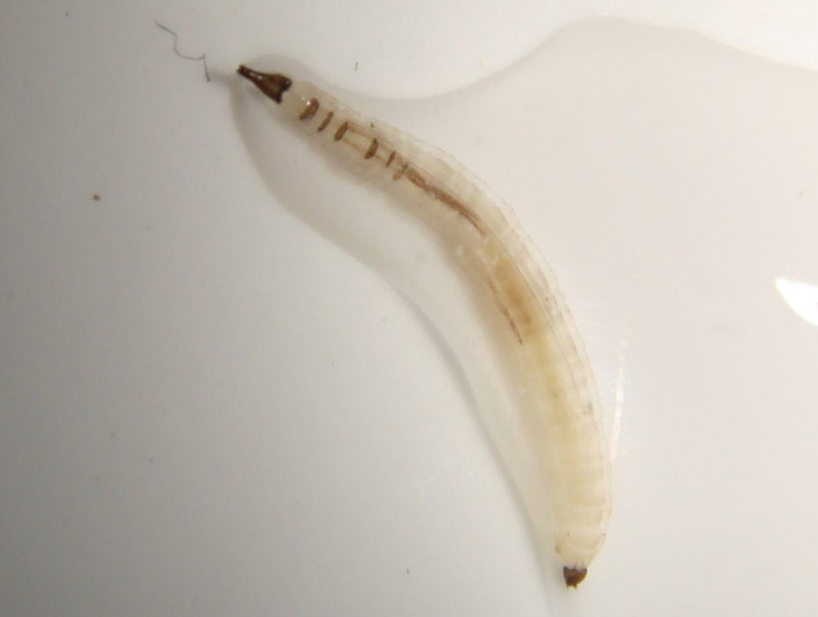
Identifying the Symptoms of Pinworm Infection
Recognizing the symptoms of pinworm infection is crucial for early detection and treatment. While some individuals may remain asymptomatic, others experience a range of uncomfortable symptoms.
Common Symptoms to Watch For
- Intense itching around the anus, particularly at night
- Difficulty sleeping due to anal discomfort
- Irritability and restlessness
- Presence of visible worms in stool or around the anal area
- Abdominal pain or nausea in severe cases
Can pinworm infection cause weight loss? While not a common symptom, severe cases of pinworm infection may lead to weight loss due to decreased appetite and gastrointestinal discomfort. However, this is relatively rare and typically occurs in cases of heavy infestation.
The Lifecycle and Transmission of Pinworms
Understanding the lifecycle of pinworms is essential for comprehending how the infection spreads and persists. The process begins when an infected person scratches the anal area, collecting microscopic eggs on their fingers or under their nails.

Stages of Pinworm Lifecycle
- Egg ingestion: Eggs are transferred to the mouth through contaminated hands or objects
- Hatching: Eggs hatch in the small intestine, releasing larvae
- Maturation: Larvae migrate to the large intestine and develop into adult worms
- Reproduction: Female worms move to the anal area to lay eggs
- Reinfection: The cycle repeats as eggs are transferred back to the mouth
How long can pinworm eggs survive outside the body? Pinworm eggs can remain viable in the environment for up to three weeks under optimal conditions. This prolonged survival period contributes to the ease of transmission and reinfection.
Risk Factors and High-Risk Groups for Pinworm Infection
While pinworm infection can affect individuals of all ages and backgrounds, certain groups are at higher risk of contracting and spreading the infection.
Groups with Increased Susceptibility
- School-age and preschool-age children
- Residents of institutional settings (e.g., nursing homes, group homes)
- Family members and caregivers of infected individuals
- People with poor hygiene practices
- Individuals with compromised immune systems
Are adults less likely to contract pinworm infection? While adults can certainly contract pinworm infection, they are generally less susceptible than children. This is primarily due to better hygiene practices and a more developed immune system. However, adults in close contact with infected individuals or those working in high-risk environments remain vulnerable.

Diagnostic Approaches for Pinworm Infection
Accurate diagnosis of pinworm infection is crucial for effective treatment. Healthcare providers employ several methods to confirm the presence of these parasites.
Common Diagnostic Techniques
- Visual inspection: Examining the anal area for visible worms, especially at night
- Scotch tape test: Collecting eggs from the anal region using adhesive tape
- Microscopic analysis: Examining samples under a microscope to identify eggs or worms
- Fingernail scraping: Analyzing material from under the nails for eggs
Is blood testing effective for diagnosing pinworm infection? Blood tests are generally not used to diagnose pinworm infections. The most reliable methods involve direct observation or collection of eggs from the anal area. Blood tests may be used in rare cases to check for complications or rule out other conditions.
Effective Treatment Strategies for Pinworm Infection
Treatment for pinworm infection typically involves a combination of medication and hygiene measures. The goal is to eliminate the current infection and prevent reinfection.
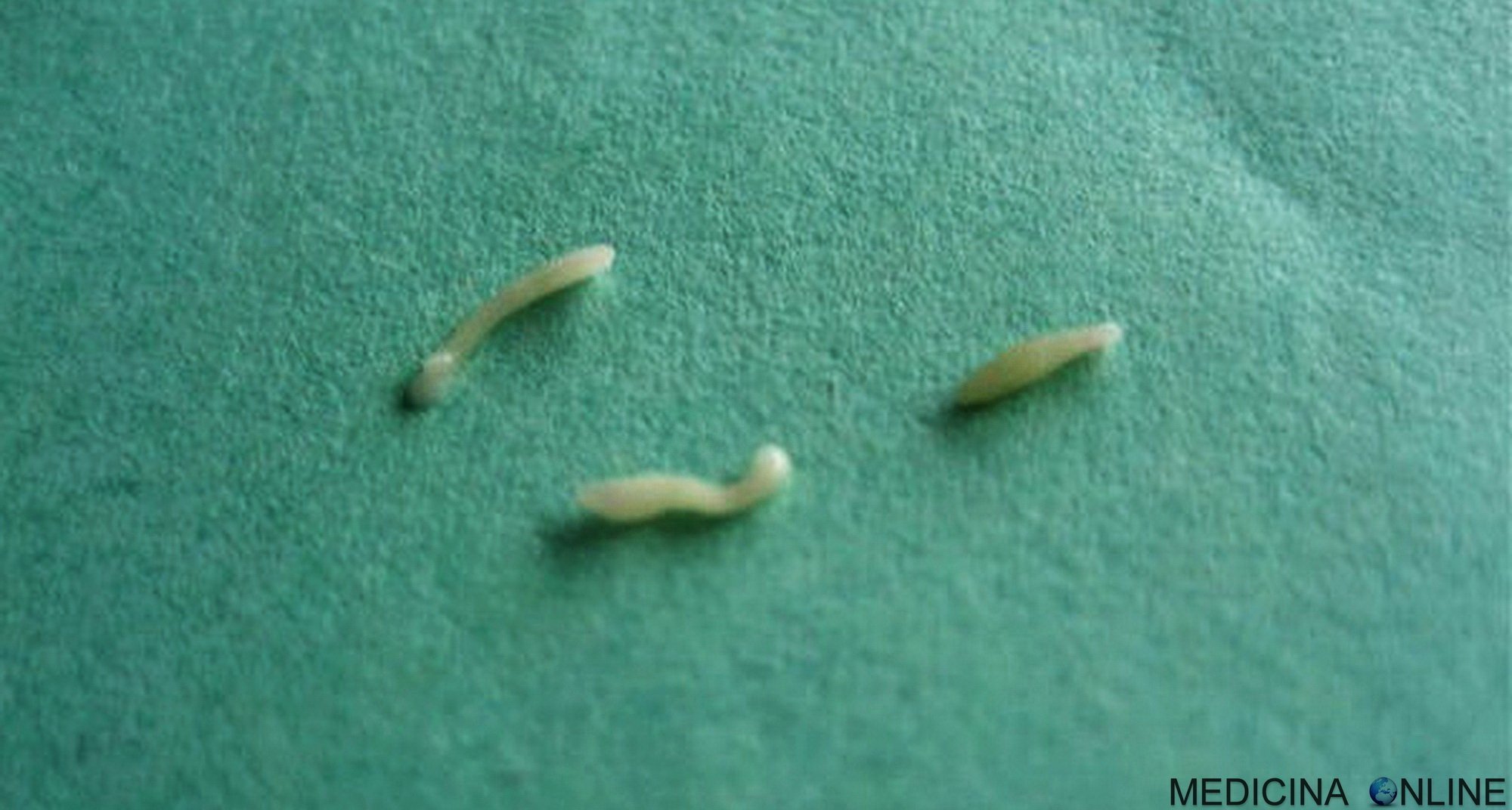
Medication Options
- Prescription drugs: Mebendazole (Emverm) and albendazole (Albenza)
- Over-the-counter options: Pyrantel pamoate (Pin-Away, Reese’s Pinworm Medicine)
How many doses of medication are typically required to treat pinworm infection? Most treatment regimens involve two doses of medication, taken two weeks apart. This approach ensures that any newly hatched worms are eliminated, as the initial dose may not affect eggs.
Hygiene Measures to Support Treatment
- Frequent hand washing, especially after using the bathroom and before eating
- Regular cleaning of bedding, clothing, and surfaces
- Avoiding scratching the anal area
- Keeping fingernails short and clean
- Showering in the morning to remove eggs laid overnight
Preventing Pinworm Infection and Reinfection
Prevention is key in managing pinworm infections, especially given the ease of transmission and reinfection. Implementing proper hygiene practices and educating family members can significantly reduce the risk of infection.
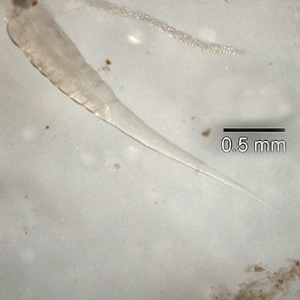
Effective Prevention Strategies
- Practicing good hand hygiene
- Regularly cleaning and vacuuming living spaces
- Avoiding nail-biting and finger-sucking
- Changing and washing underwear and bedding frequently
- Treating all household members simultaneously if infection occurs
Can pets transmit pinworm infection to humans? While pets can carry other types of worms, pinworms are specific to humans and do not infect animals. Therefore, pets are not a direct source of pinworm infection for humans.
Potential Complications and Long-term Effects of Pinworm Infection
While pinworm infections are generally harmless and easily treatable, in rare cases, complications can arise, especially if left untreated or in individuals with weakened immune systems.
Possible Complications
- Secondary bacterial infections due to scratching
- Urinary tract infections in females
- Weight loss and malnutrition in severe cases
- Psychological distress and sleep disturbances
Can pinworm infection lead to appendicitis? While extremely rare, there have been documented cases where pinworms have been associated with appendicitis. However, this is not a common complication and should not be a major concern for most individuals with pinworm infection.

Pinworm Infection in Special Populations
Certain groups may require special consideration when it comes to pinworm infection, including pregnant women, immunocompromised individuals, and young children.
Considerations for Vulnerable Groups
- Pregnant women: Some medications may be contraindicated; consult a healthcare provider
- Immunocompromised individuals: May be at higher risk for complications
- Young children: May require assistance with hygiene measures and medication administration
Is pinworm infection more severe in immunocompromised individuals? While the infection itself is not necessarily more severe, immunocompromised individuals may be at higher risk for complications and may have a harder time clearing the infection. Close monitoring and prompt treatment are essential for this group.
The Global Impact of Pinworm and Related Parasitic Infections
Pinworm infection is part of a larger group of parasitic infections that affect millions of people worldwide. Understanding the global context can provide insight into the importance of prevention and treatment efforts.

Related Parasitic Infections
- Soil-transmitted helminths (STH)
- Ascariasis
- Hookworm infection
- Trichuriasis
How do pinworm infections compare to other parasitic worm infections in terms of global prevalence? While pinworm infections are common worldwide, they are generally considered less severe than some other parasitic worm infections, such as those caused by soil-transmitted helminths. STH infections affect over 1.5 billion people globally and can cause significant morbidity, especially in developing countries with poor sanitation.
Myths and Misconceptions About Pinworm Infection
There are many myths and misconceptions surrounding pinworm infection, which can lead to unnecessary anxiety or improper management of the condition. Addressing these misconceptions is crucial for promoting accurate understanding and effective treatment.
Common Myths Debunked
- Myth: Only dirty people get pinworms
- Fact: Pinworm infection can affect anyone, regardless of cleanliness
- Myth: Pinworms can infect internal organs
- Fact: Pinworms typically remain in the intestinal tract and anal area
- Myth: You can get pinworms from contaminated food
- Fact: While possible, this is an uncommon mode of transmission
Do pinworms only come out at night? While it’s true that female pinworms typically emerge at night to lay eggs, they can be active at any time. The nighttime activity is simply a part of their lifecycle and doesn’t mean they are completely inactive during the day.

The Role of Public Health Measures in Controlling Pinworm Infection
Public health initiatives play a crucial role in managing and preventing the spread of pinworm infections, especially in community settings such as schools and daycare centers.
Effective Public Health Strategies
- Education programs on proper hygiene practices
- Regular screening in high-risk settings
- Providing resources for treatment and prevention
- Implementing policies to reduce transmission in institutional settings
How effective are mass deworming programs in controlling pinworm infections? While mass deworming programs have shown success in controlling soil-transmitted helminth infections in endemic areas, they are less commonly used for pinworm infections. Pinworm control typically focuses more on hygiene education and targeted treatment of affected individuals and their close contacts.
Emerging Research and Future Directions in Pinworm Treatment
As with many medical conditions, research into pinworm infection continues to evolve, potentially leading to new treatment options and prevention strategies in the future.
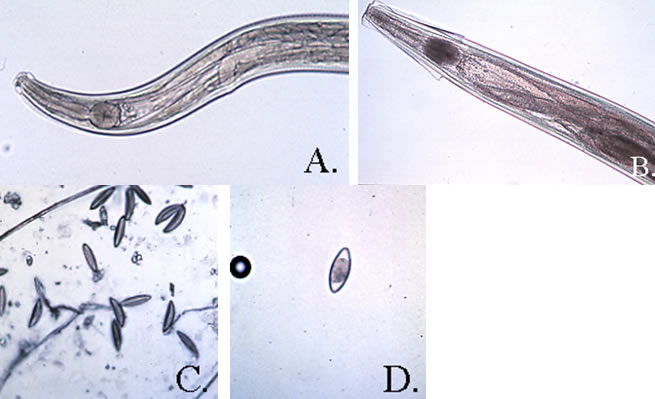
Areas of Ongoing Research
- Development of new anti-parasitic medications
- Improved diagnostic techniques for faster detection
- Investigation of potential environmental control measures
- Studies on the impact of pinworm infection on gut microbiome
Are there any promising new treatments on the horizon for pinworm infection? While current treatments are generally effective, researchers are exploring new anti-parasitic compounds that may offer improved efficacy or reduced side effects. Additionally, there is growing interest in understanding the interaction between parasites like pinworms and the human microbiome, which could lead to novel treatment approaches in the future.
Living with Pinworm Infection: Coping Strategies and Support
Dealing with a pinworm infection can be challenging, both physically and emotionally. Understanding how to cope with the condition and where to find support can make a significant difference in managing the infection effectively.
Coping Strategies
- Maintaining open communication with family members
- Implementing a family-wide approach to treatment and prevention
- Addressing any psychological distress or stigma associated with the infection
- Seeking support from healthcare providers or support groups
How can parents help children cope with pinworm infection? Parents can help by explaining the condition in age-appropriate terms, emphasizing that it’s common and not a reflection of poor hygiene. Encouraging proper hand washing and other preventive measures as a family activity can also help children feel more in control and less anxious about the situation.

The Economic Impact of Pinworm Infection
While often overlooked, pinworm infections can have significant economic implications, both for individuals and healthcare systems.
Economic Factors to Consider
- Cost of medications and medical consultations
- Lost productivity due to illness or caring for infected family members
- Expenses related to increased hygiene measures and cleaning
- Public health expenditures for education and prevention programs
What is the estimated global economic burden of pinworm infections? While specific data on the global economic burden of pinworm infections is limited, parasitic worm infections as a whole are estimated to cost billions of dollars annually in healthcare expenses and lost productivity. Pinworm infections contribute to this burden, particularly in regions with high prevalence rates.
Pinworm Infection in the Context of Global Health
Understanding pinworm infection within the broader context of global health can provide valuable insights into its significance and the challenges faced in controlling parasitic diseases worldwide.

Global Health Considerations
- Relationship to other neglected tropical diseases
- Impact on child development and education in endemic areas
- Role of improved sanitation in reducing parasitic infections
- Challenges in resource-limited settings
How does the prevalence of pinworm infection compare in developed versus developing countries? While pinworm infections occur worldwide, the prevalence and impact can vary significantly between developed and developing countries. In developed nations, better sanitation and access to healthcare often result in lower infection rates and quicker treatment. However, in developing countries, pinworm infections may be more prevalent and challenging to control due to limited resources and infrastructure.
As we continue to advance our understanding of pinworm infections and related parasitic diseases, it becomes increasingly clear that a multifaceted approach is necessary. This includes not only medical interventions but also improvements in sanitation, education, and public health policies. By addressing these issues comprehensively, we can work towards reducing the global burden of pinworm infections and improving health outcomes for affected individuals worldwide.

What Are Pinworms? Symptoms, Causes, Diagnosis, Treatment, and Prevention
Causes and Risk Factors of a Pinworm Infection
Quite simply, one gets a pinworm infection after ingesting worm eggs. To become infected, an individual either directly (via their hands or fingernails) or indirectly (via contaminated clothing, toilet seats, bedding, toys, or food, for example) transfers pinworm eggs from the anus to their mouth. In addition, because pinworm eggs are so teeny, they can become airborne, where they are inhaled and ingested. While pinworm infections affect people of all ages and socioeconomic background, according to the Centers for Disease Control and Prevention (CDC) those who are most impacted include:
- School-age and preschool-age children
- Institutionalized individuals
- Those who share a household with infected individuals
- Individuals who are caregivers to the infected (5)
The eggs laid on the skin surrounding the anus can survive for up to three weeks, which allows plenty of time for the infected person to scratch the area, have the eggs become embedded under the fingernails, and inadvertently reinfect themselves, thus continuing the parasites’ lifecycle. (4)
(4)
How Is a Pinworm Infection Diagnosed?
There are three different ways to approach the diagnosis of pinworms.
Examine the anus. Wake your child about one to two hours after you put him or her to bed, then check around his or her anus for wiggly, white, hair-thin worms that are about ¼ to ½ inch (0.63 to 1.27 centimeters) long. (3,6)
Use transparent tape. First thing in the morning (before your child bathes or uses the bathroom), firmly place a 1-inch piece of transparent tape against the skin around the anus for a few seconds, allowing any pinworm eggs to stick to the tape. Next, transfer the tape to a glass slide, sticky side down, and place inside a sealed plastic bag. Repeat for three consecutive mornings and take the tape to the doctor for microscopic examination. If you see worms that have adhered to the tape, you can likely inform your doctor that you’ve found pinworms. (7)
Analyze under-the-fingernail samples. A physician may also opt to use a microscope to examine a specimen taken from under a child’s fingernails. Eggs may be found there due to scratching. (8)
A physician may also opt to use a microscope to examine a specimen taken from under a child’s fingernails. Eggs may be found there due to scratching. (8)
Treatment and Medication Options for Pinworms
With proper hygiene, a pinworm infection is usually considered self-limiting, which means it can resolve on its own with no long-term ill effect. (4) But most people would rather be sure the infection is gone and opt for treatment. Your healthcare provider will likely recommend that all members of your household get treated in order to prevent infection and reinfection, including those who don’t exhibit symptoms. (10) Treatments include the following:
Medication Options for Pinworms
One of the following is usually the treatment of choice. No matter which is used, an initial dose is given, followed by a second dose two weeks later to prevent reinfection by worms hatched from eggs not killed the first go-round.
- Prescription The drugs mebendazole (Emverm) and albendazole (Albenza) are oral meds that cause pinworms to be expelled through bowel movements.
 (3) They’re generally not recommended for use in children under 2 years old. (6)
(3) They’re generally not recommended for use in children under 2 years old. (6) - Over-the Counter (OTC) While pyrantel (Pin-Away) and Reese’s Pinworm Medicine (pyrantel pamoate) are available without prescription, they’re considered less effective than the other choices. (11)
Alternative and Complementary Therapies
Adhering to stringent hygiene measures for six weeks, which is the lifespan of a pinworm, can clear up an infection without medication. These practices also reduce the risk of reinfection. If any member of your household is a nail-biter or thumb-sucker, this method is likely not right for you. (12) These med-free measures include:
- Keep fingernails short.
- Scrub fingernails with a nail brush daily.
- Wash hands thoroughly for at least 20 seconds after using the bathroom and before eating.
- Shower each morning to help remove eggs from the skin.
- Don’t share towels or washcloths.

- Wear snug underwear, avoiding boxer shorts.
- Change underwear every morning.
- Wash bed linens, pajamas, towels, and washcloths with each use; do not shake before laundering.
- Change hand towels daily.
- Vacuum carpets and clean floors at least once a week, paying special attention to the bedrooms and bathrooms.
- Clean kitchen and bathroom surfaces daily, especially faucets and the toilet flusher.
- Refrain from eating in the bedroom to avoid possibly swallowing eggs that have landed in bed linens.
- Keep toothbrushes in a closed cabinet. (Theoretically, airborne eggs can land on toothbrushes.) (12)
Related Conditions of Pinworms
Parasitic worms known as soil-transmitted helminths (STH) are passed to the soil through the feces and may remain in the soil for months or years. They are responsible for a lion’s share of the parasitic disease burden worldwide. (15) Symptoms of an infection by these parasites can be similar to those of pinworms.
Ascaris These parasitic worms are found in tropical areas and can cause either no symptoms, or symptoms such as fever, cough, wheezing, stomach cramps, vomiting, and restless sleep. (16) Infection occurs when eggs are ingested after putting contaminated hands or fingers in one’s mouth — or by consuming produce that’s come in contact with contaminated soil and not properly cooked, washed, or peeled. (15)
Hookworm Infections are most commonly found in temperate and warm, moist climates. The worms penetrate the skin when a person walks barefoot on contaminated soil and then travel to the small intestine, where they can cause abdominal pain and sometimes anemia. (4) People in good health may not exhibit any symptoms. (16)
Whipworm Hot, humid climates are generally where whipworms are found. Like ascaris, whipworm infections occur when eggs are ingested via hand-to-mouth action or after consuming contaminated fruits or vegetables. Usually, there are no symptoms, but a severe infection can bring about mucousy, watery, and bloody bowel movements and the frequent and painful passage of stool. Rectal prolapse (part of the large intestine slips outside of the anus) can also occur. (17)
Usually, there are no symptoms, but a severe infection can bring about mucousy, watery, and bloody bowel movements and the frequent and painful passage of stool. Rectal prolapse (part of the large intestine slips outside of the anus) can also occur. (17)
Resources We Love
Centers for Disease Control and Prevention (CDC)
The CDC is always a reliable go-to for research-based information. And beyond all the scientific names and the epidemiologic facts, the CDC also offers user-friendly info, like the very helpful Pinworm Infection FAQ section, which tackles topics such as swimming while infected with pinworms, whether pets can give you pinworms, and more.
KidsHealth
This nonprofit children’s health system provides readers with easy-to-understand info on a wide variety of health topics. The best part: You can find guidance on the very same topic written specifically for parents, for kids, and for teens. With pinworms, for instance, kids can learn about what’s making their rear end itchy in a friendly, kid-appropriate way. Meanwhile, parents can read more about the nitty-gritty.
Meanwhile, parents can read more about the nitty-gritty.
HealthyChildren.org
This website is from the American Academy of Pediatrics, a professional organization that boasts roughly 67,000 pediatricians as members. The group is a leading national voice on children’s health, supporting research, science, and presenting the info in a user-friendly manner on its HealthyChildren.org website. Here, parents can find info on anal itching and pinworm infections. Plus, there’s an exceedingly helpful Symptom Checker, where parents can plug in various ills and injuries to get specific help.
Frozen Fruit Sold at Walmart, Whole Foods, Trader Joe’s Recalled Due to Listeria Risk
A recall affecting Walmart, Whole Foods, Trader Joe’s, Aldi, and AWG includes frozen pineapple, cherries, mangoes, and fruit blends.
By Jean Brannum
Diabetes Drug Metformin May Reduce Long COVID Risk
The odds of developing long COVID were lowered by about 40 percent in COVID-19 patients who received metformin, a new study found.
By Don Rauf
7 Top COVID-19 Vaccine Myths, Debunked
Concerns that COVID-19 vaccines alter your DNA, contain microchip trackers, or can kill you by making your heart stop have no basis in scientific fact…
By Don Rauf
What Is Whooping Cough? Symptoms, Causes, Diagnosis, Treatment, and Prevention
Whooping cough, also known as pertussis, is a highly contagious infectious bacterial disease that causes uncontrollable and violent coughing.
By Holly Pevzner
Pinworm test Information | Mount Sinai
Oxyuriasis test; Enterobiasis test; Tape test
A pinworm test is a method used to identify a pinworm infection. Pinworms are small, thin worms that commonly infect young children, although anyone can be infected.
Pinworms are a common problem in children and may spread to adults (typically the parents or other care-givers). The eggs may be easily seen under a microscope. To obtain a sample, a piece of cellophane tape is pressed against the patient’s anal opening. The sticky side of the tape picks up the pinworm eggs and the tape is then stuck to a microscope slide. The eggs can be viewed under the microscope, as seen above. (Image courtesy of the Centers for Disease Control and Prevention. )
)
This is the head of a pinworm. Pinworms are most common in children. They are easily transmitted and sometimes appear in small outbreaks among school children.
Pinworms are a contagious intestinal parasite infestation that occurs commonly in children.
How the Test is Performed
When a person has a pinworm infection, adult pinworms live in the intestine and colon. At night, the female adult worms deposit their eggs outside the rectum near the anal area.
One way to detect pinworms is to shine a flashlight on the anal area. The worms are tiny, white, and threadlike. If none are seen, check for 2 or 3 additional nights.
The best way to diagnose this infection is to do a tape test. The best time to do this is in the morning before bathing, because pinworms lay their eggs at night.
Steps for the test are:
- Firmly press the sticky side of a 1-inch (2.
 5 centimeters) strip of cellophane tape over the anal area for a few seconds. The eggs stick to the tape.
5 centimeters) strip of cellophane tape over the anal area for a few seconds. The eggs stick to the tape. - The tape is then transferred to a glass slide, sticky side down. Put the piece of tape in a plastic bag and seal the bag.
- Wash your hands well.
- Take the bag to your health care provider. The provider will check the tape to see if there are eggs.
The tape test may need to be done on 3 separate days to improve the chances of detecting the eggs.
You may be given a special pinworm test kit. If so, follow instructions on how to use it.
How to Prepare for the Test
No special preparation is necessary.
How the Test will Feel
The skin around the anus may have minor irritation from the tape.
Why the Test is Performed
This test is performed to check for pinworms, which can cause itching in the anal area.
What Abnormal Results Mean
If adult pinworms or eggs are found, the person has a pinworm infection. Usually, all household members need to be treated with medicine. This is because pinworms are easily passed back and forth within a household.
Risks
There are no risks with this test.
Considerations
Dent AE, Kazura JW. Enterobiasis (Enterobius vermicularis). In: Kliegman RM, St. Geme JW, Blum NJ, Shah SS, Tasker RC, Wilson KM, eds. Nelson Textbook of Pediatrics. 21st ed. Philadelphia, PA: Elsevier; 2020:chap 320.
Nelson Textbook of Pediatrics. 21st ed. Philadelphia, PA: Elsevier; 2020:chap 320.
Mejia R, Weatherhead J, Hotez PJ. Intestinal nematodes (roundworms). In: Bennett JE, Dolin R, Blaser MJ, eds. Mandell, Douglas, and Bennett’s Principles and Practice of Infectious Diseases. 9th ed. Philadelphia, PA: Elsevier; 2020:chap 286.
Last reviewed on: 9/10/2022
Reviewed by: Jatin M. Vyas, MD, PhD, Associate Professor in Medicine, Harvard Medical School; Associate in Medicine, Division of Infectious Disease, Department of Medicine, Massachusetts General Hospital, Boston, MA. Also reviewed by David C. Dugdale, MD, Medical Director, Brenda Conaway, Editorial Director, and the A.D.A.M. Editorial team.
symptoms, treatment – health articles
11/10/2022
Worms are worms that lead a parasitic way of life in the body of their host – a man. Age doesn’t matter. Both adults and children are equally susceptible to infection. The classification of helminthiases is very extensive, especially in countries with a hot climate.
The classification of helminthiases is very extensive, especially in countries with a hot climate.
There are 3 classes of parasitic worms:
- round (nematodes) – pinworms, roundworms;
- tapeworms (cestodes) – pork tapeworm, bovine tapeworm, echinococcus;
- flatworms, flukes (trematodes).
The most common worms in children are pinworms that cause enterobiasis . These are helminths of small size, on average up to 1 cm, white-gray in color with a curved body. The place of localization of these parasites is the large intestine, but they can also penetrate into the lower sections of the small intestine. Reproduction of pinworms occurs on the skin near the anus. At night, female pinworms get out to debug eggs in the folds of the skin, often penetrating the labia in girls, which ends with infectious diseases of the genitals. In total, these helminths live for about 1-1.5 months. The process of self-infection in a child can lead to the fact that the malaise will continue for many years. Parasites can be detected with the naked eye in the stool.
Parasites can be detected with the naked eye in the stool.
Another type of worm most commonly found in children is roundworm . Characteristic species, reaching a length of 15 cm, these nematodes settle in the lumen of the loops of the small intestine, advancing towards the moving food bolus. In the feces, roundworms are very rare. Females periodically release eggs, which can be found in the analysis of feces. But if they were not found during the study, this does not mean that the child is not infected. The life cycle of roundworm can last several years.
Causes
The child’s curiosity is realized by his fingers, the child, learning the world, actively touches everything that comes to his hand and immediately puts it into his mouth, testing for strength and taste. Thus, pinworm eggs safely enter the digestive tract of their future little host.
A child becomes infected with worm eggs from the surface of unwashed fruits when drinking contaminated water.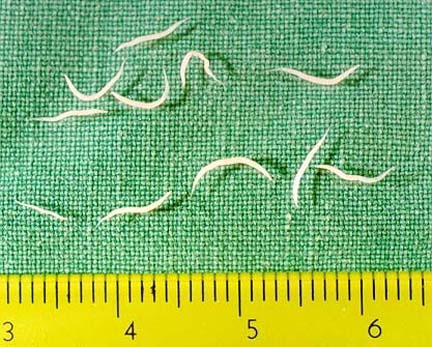 Very often, infection occurs when communicating with animals, or when playing in the ground, a sandbox, where cats and dogs like to solve their physiological problems. After a walk, children often do not wash their hands, and all the dirt, along with parasitic eggs, gets into their mouths.
Very often, infection occurs when communicating with animals, or when playing in the ground, a sandbox, where cats and dogs like to solve their physiological problems. After a walk, children often do not wash their hands, and all the dirt, along with parasitic eggs, gets into their mouths.
Symptoms of worms
How can you tell if a child has worms? If the child was infected with a large number of eggs of parasitic worms, then after a few days a sharp deterioration in the condition may occur. In milder cases, the first symptoms of invasion appear after a few weeks or even months. Much depends on immunity. It can quite cope with parasites and restrain their development. But gradually the defenses are reduced, and the helminths infect the body, causing serious problems.
The first signs of worms are symptoms of poisoning (intoxication). The vital activity of worms is accompanied by the release of a large number of animal toxins that can poison the child’s body. In the intestines, parasitic worms use nutrients, as a result of which the baby gradually becomes deficient in proteins, carbohydrates, fats and vitamins.
The child develops:
- emaciation,
- pale skin,
- weakness, frequent dizziness,
- rise in body temperature, headache,
- bad dream,
- tearfulness,
- depressed mood.
Manifested intestinal ailments – constipation, loose stools, rumbling and pain in the abdomen, bouts of nausea and vomiting, pain in different parts of the abdomen, bloating. The disease may be accompanied by allergic conditions: itching, rashes, cough, inflammation of the mucous membranes of the respiratory tract. Weakened immunity leads to the addition of infectious diseases.
Diagnosis and treatment of helminthiasis
Diagnosis of helminthiasis by feces is quite difficult. This is due to the fact that ascaris or pinworm eggs do not appear in the feces every day, and the technique of microscopy of smears from the analysis requires great care. To increase reliability, it is desirable to take a stool test for worm eggs for at least 3 days in a row.
In cases of increased risk of infection with worms (contact with animals, the child’s playing on the ground or in open sandboxes, the child’s habit of taking things in his mouth, biting his nails or licking his fingers, etc.), it is advisable to undergo an in-depth examination, which includes, in addition to a threefold analysis of feces special blood tests that detect antibodies to helminths.
In the presence of allergic manifestations of unknown origin, an increase in the number of eosinophils in the blood test, persistent intestinal dysbacteriosis, it is advisable to donate blood for the determination of class E immunoglobulins (Ig E and G) to ascaris and other helminths. You can check for worms in pets.
By evaluating the totality of indirect signs and history, the doctor may recommend antihelminthic therapy without direct evidence of the presence of worms in the child, if other pathologies that cause similar clinical manifestations are excluded.
If worms are found in a child or in one of the family members, it is necessary, if possible, to treat all family members in order to avoid the formation of a focus of infection of each other with helminth eggs. In this situation, in addition, it is necessary to strengthen hygiene measures, in particular, boil and iron bed and personal linen on both sides.
In this situation, in addition, it is necessary to strengthen hygiene measures, in particular, boil and iron bed and personal linen on both sides.
If you notice symptoms of parasite infestation, consult a doctor and get diagnosed at the MEDSI-ProMedicina clinic in Ufa
What you need to know about enterobiasis
Among parasitic diseases, helminthiases are the most widespread, with which, according to WHO estimates, a quarter of the world’s population is infected.
The pathogenic effect of helminths on the human body is associated not only with the pathology of the organs where they are localized, but also with the general effect on the human body.
Parasitic diseases in conditions of protein deficiency have a pronounced pathogenic effect, which affects the slow development of children and the violation of the immune status of the population, which contributes to the spread of other infectious diseases.
Clinical manifestations of helminthiases are usually characterized by non-specific clinical symptoms, chronic course with relatively slow dysfunction of various organs and systems due to the cumulative effect, often latent course with subclinical manifestations of the disease.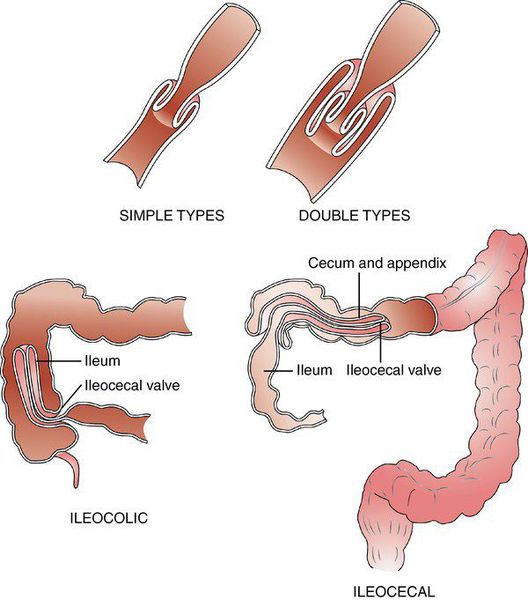 These features mask their negative effect and give the impression of weak pathogenicity compared to other diseases. To the greatest extent, the pathogenic effect of helminthiases is reflected in pregnant women and children, people with malnutrition.
These features mask their negative effect and give the impression of weak pathogenicity compared to other diseases. To the greatest extent, the pathogenic effect of helminthiases is reflected in pregnant women and children, people with malnutrition.
Enterobiasis belongs to the nematodosis group and is widespread. The greatest incidence of enterobiasis is noted among children. Pathogen – pinworm, helminth 2-13 mm long, 0.1-0.5 mm thick.
Adults live in the large intestine, predominantly in the region of the caecum. Moving along with the fecal masses, they enter the rectum, crawl out through the anus and crawl along its circumference, where, mainly in the perianal region and on the buttocks, females lay eggs. Pinworms can also crawl onto the thighs, lower back, and into the vagina. Helminth eggs laid on the skin or the inner surface of the linen mature within 4-6 hours.
When helminth eggs are swallowed, the development cycle is repeated. During scratching of itchy places, the patient contaminates his fingers with pinworm eggs, then puts them into his mouth and onto environmental objects.
The ease of infection with enterobiasis upon contact with the patient and the stability of helminth eggs in the external environment causes the widespread distribution of these helminths among the population, especially in children’s groups and among people living in hostels.
The life span of pinworms from the moment of infection to the emergence of mature females for oviposition is about 30 days.
The most common symptom of enterobiasis is anal itching. Initially, itching occurs during sleep, when the muscles of the anus relax, which makes it easier for pinworms to come out. If untreated, itching occurs not only at night, but also during the day. Prolonged and strong scratching of itchy places – anus, perineum, labia contributes to skin damage and the development of eczematous dermatitis, which further intensifies itching. Itching disrupts sleep, up to the development of insomnia, reduces the patient’s performance, causes a neurotic state. Children become capricious, appetite decreases, increased masturbation is possible.

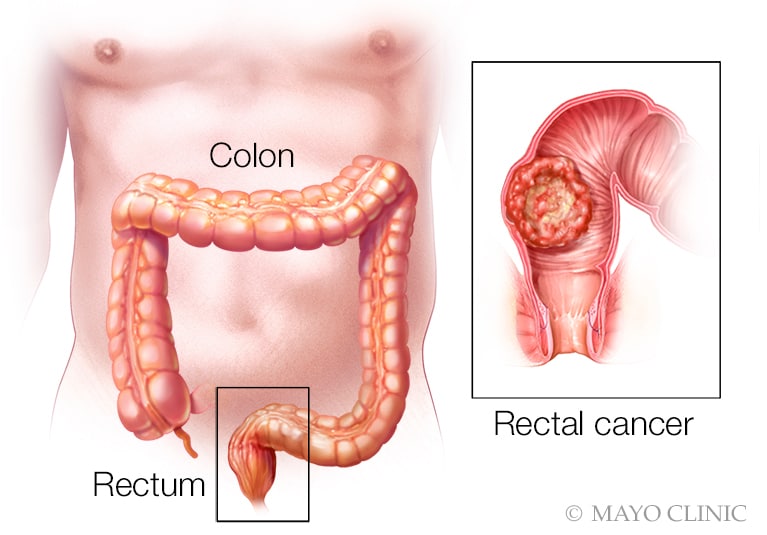 (3) They’re generally not recommended for use in children under 2 years old. (6)
(3) They’re generally not recommended for use in children under 2 years old. (6)
 5 centimeters) strip of cellophane tape over the anal area for a few seconds. The eggs stick to the tape.
5 centimeters) strip of cellophane tape over the anal area for a few seconds. The eggs stick to the tape.